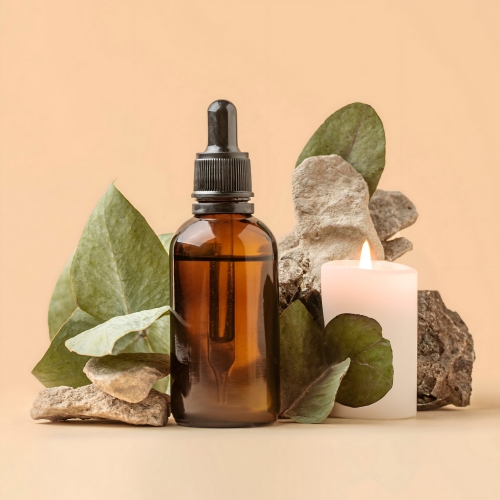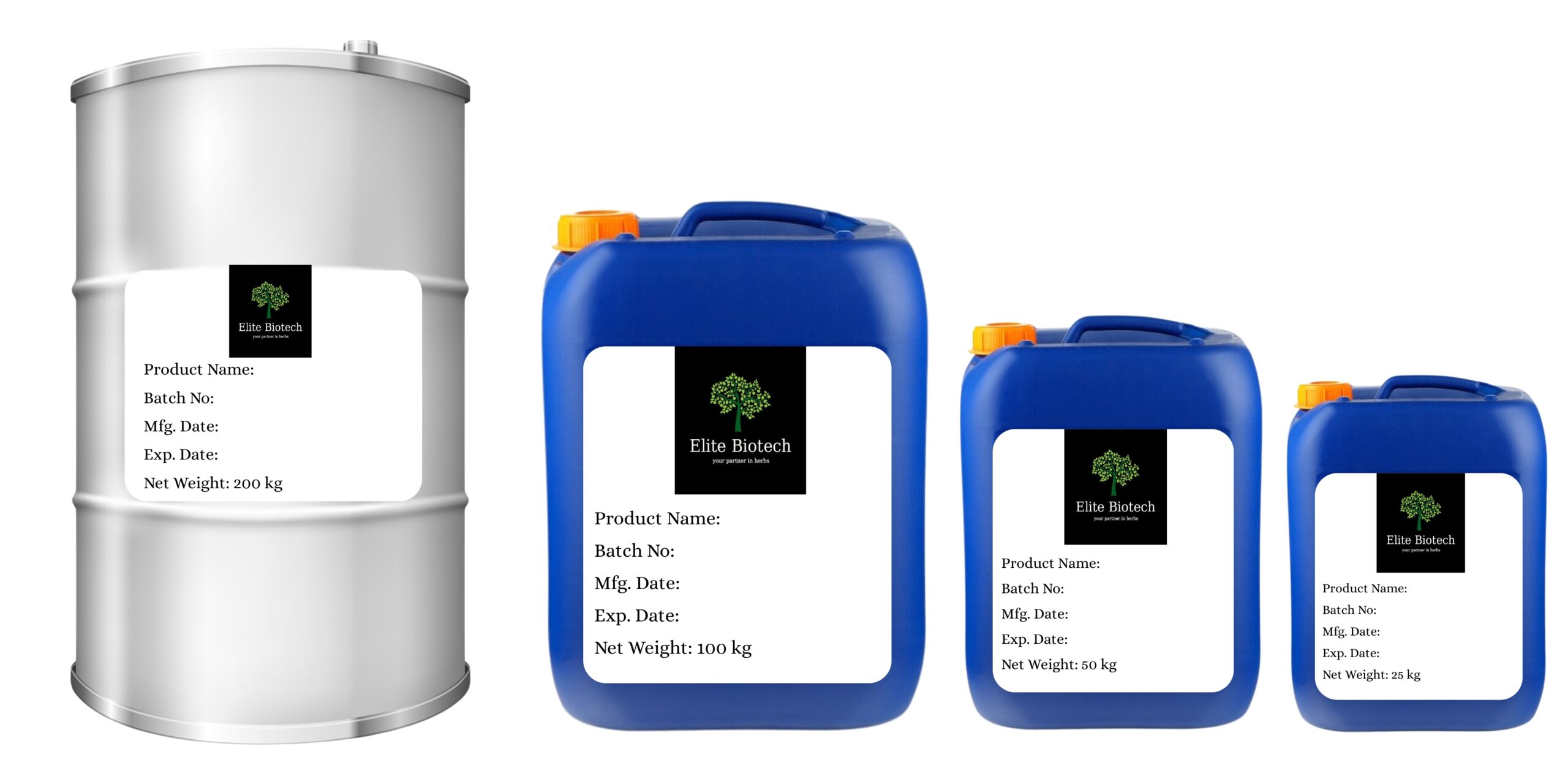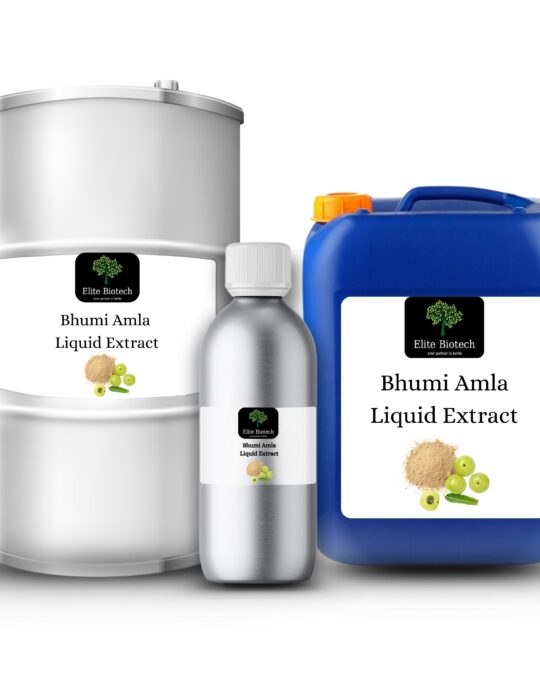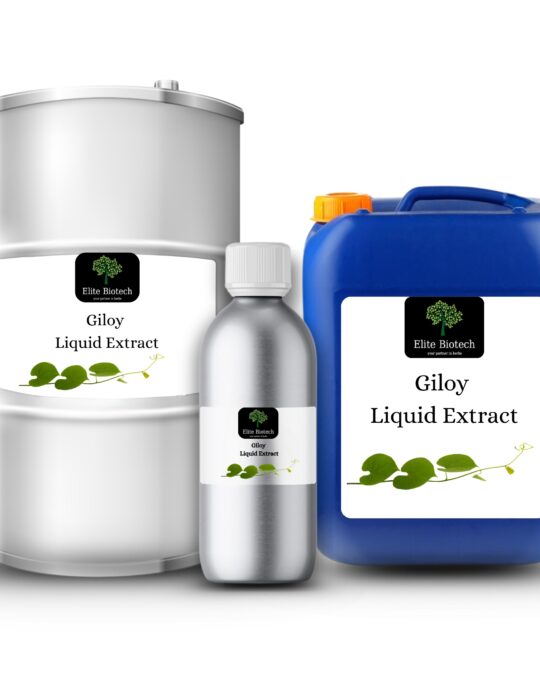Mulethi Liquid Extract
Commonly known as Amritha or Guduchi, widely distributed throughout tropical and sub tropical India. Stem terete often producing foliform aerial roots. Tastes intensively bitter and odorless. All parts of the plant are useful. The aerial parts are used to extract the active principles.




Mulethi Liquid Extract
Mulethi Liquid Extract, obtained from the roots of Glycyrrhiza glabra cultivated in India’s Gujarat and Rajasthan regions via gentle cold-percolation, is a clear to pale-amber elixir celebrated for its high glycyrrhizin, flavonoid and polysaccharide content. Revered in Ayurvedic and traditional herbal medicine for its demulcent, anti-inflammatory and adrenal-supporting properties, this smooth, sweet-tasting extract aids respiratory comfort, digestive balance and skin healing. Its mild, honey-like aroma and silky texture make it ideal for incorporation into functional tonics, throat-soothing syrups and topical wound-healing gels. With third-party–verified purity ≥ 95 % and an 18-month shelf life under cool, dark storage, Mulethi Liquid Extract combines centuries of botanical wisdom with rigorous modern quality control. Choose Elite Biotech for guaranteed authenticity and competitive pricing ensuring you receive 100 % pure, lab-tested extract at exceptional value.
Uses of Neem Liquid Extract

Pharmaceutical Industry
Mulethi Liquid Extract is formulated into throat lozenges, cough syrups and anti-ulcer capsules to leverage glycyrrhizin’s soothing and mucosal-protective actions. Standardized active-marker levels ensure consistent efficacy in both over-the-counter respiratory remedies and prescription-grade gastrointestinal formulations.

Food & Beverage Industry
In herbal teas, wellness shots and flavored health tonics, Mulethi Liquid Extract imparts a naturally sweet, licorice-like note alongside digestive-support benefits. Micro-encapsulation protects its heat-sensitive compounds, enabling seamless inclusion in ready-to-drink beverages without altering flavor clarity.

Cosmetic & Personal Care Industry
In brightening serums and wound-repair creams, Mulethi Liquid Extract’s anti-inflammatory and collagen-supporting properties help calm irritation and promote barrier restoration. Its humectant profile enhances moisture retention, while its gentle aroma complements spa-grade facial masks and body lotions.

Aromatherapy & Wellness Industry
Blended into diffuser blends and inhalers, Mulethi Liquid Extract’s warm, sweet scent comforts the mind and supports stress resilience. Its adaptogenic phytochemicals help modulate cortisol levels, making it a popular choice for meditation aids, relaxation rituals and rejuvenating massage oils.

Agrochemical Industry
As a botanical biostimulant, Mulethi Liquid Extract fosters soil microbial balance and root vigor. Applied as a foliar spray or seed treatment, its polysaccharide-rich composition enhances nutrient uptake and disease resistance, offering sustainable solutions for organic cultivation.

Perfumery & Fragrance Industry
Perfumers prize Mulethi Liquid Extract for its smooth, sweet-vanilla base notes and natural fixative qualities. It enriches oriental, gourmand and amber accords with depth and longevity, enabling creation of exclusive niche fragrances that marry warmth with modern sophistication.
Why Choose Elite Biotech?
Elite Biotech delivers premium bulk Mulethi Liquid Extract sourced from certified organic farms, ensuring authenticity, sustainability and competitive industrial pricing.
- Rigorous Quality Control: Comprehensive third-party testing at every production stage guarantees purity, potency and consistency.
- Sustainable Sourcing: Partnerships with ethically managed cultivators and eco-friendly extraction safeguard both product quality and the environment.
- Competitive Bulk Pricing: Flexible order quantities and attractive rates support industries from nutraceuticals to cosmetics and agrochemicals.
- Dedicated Support: Expert technical assistance, custom documentation and proactive logistics ensure a seamless supply chain.
- Direct from Manufacturers: Traceable sourcing from certified facilities provides the best value straight to your door.
- Fast Global Shipping: Efficient worldwide logistics meet critical timelines with precision and reliability.
- Proven Track Record: Trusted by leading industrial clients for consistent quality and long-term partnership success.
Disclaimer
Mulethi Liquid Extract is a concentrated herbal product and should be used with care. Always adhere to recommended usage rates and consult a healthcare professional if you have any health concerns. Information provided is general and may not capture all characteristics of this extract.
Caution
Keep out of reach of children and pets. Avoid contact with eyes and mucous membranes. If pregnant, nursing or taking medications, consult your doctor before use.
Packaging Sizes

Specification
| Parameter | Details |
| Product Name | Mulethi Liquid Extract |
| Botanical Name / INCI Name | Glycyrrhiza glabra Root Extract |
| Product Category | Liquid Extract / Ayurvedic Ingredient |
| Country of Origin | India (Gujarat & Rajasthan) |
| Method of Extraction | Cold Percolation of Root |
| Plant Part Used | Root |
| CAS No | N/A |
| HSN No | 13021900 |
| Common Names | Licorice Root Extract |
| Blends Well With | Fennel Extract, Peppermint Oil, Ginger Extract, Holy Basil Extract |
| Industry/Application | Pharmaceuticals, Nutraceuticals, Cosmetics, Aromatherapy, Agrochemicals, Perfumery |
| Grade | Therapeutic / Cosmetic Grade |
| Colour & Appearance | Clear to pale-amber liquid |
| Aroma | Sweet, honey-like |
| Form | Liquid |
| Solubility | Soluble in water and ethanol |
| Purity | ≥ 95 % |
| Main Ingredients | Glycyrrhizin, Flavonoids, Polysaccharides |
| Shelf Life | 18 months under recommended storage |
| Specific Gravity | 1.03 – 1.07 |
| Refractive Index | 1.48 – 1.52 |
| Optical Rotation | – 1° to + 1° |
| Certificate | CoA, GMP, ISO available upon request |
| Testing | HPTLC fingerprinting, GC–MS profiling, microbial & heavy-metal analysis |
| Minimum Order Quantity | 10 kg |
| Delivery Timeline | 7 – 15 business days |
| Storage Instructions | Store in a cool, dry place away from light; keep container tightly sealed |
Certificates
No certificates available.
Frequently Asked Questions
Q1: How do you verify the glycyrrhizin content in Mulethi Liquid Extract?
Ans: Our extraction and purification protocols allow standardization of glycyrrhizin levels (e.g., 5–10 %) per client requirements, with each batch validated by detailed GC–MS assay and Certificate of Analysis.
Q2: What stability testing is provided for formulation development?
Ans: We conduct accelerated and real-time stability studies in target matrices to confirm compatibility with common excipients, processing conditions and desired shelf-life parameters.
Q3: What packaging formats are available for bulk supply?
Ans: We offer food-grade HDPE drums, amber glass carboys and stainless-steel IBC totes, all with nitrogen-blanketing and tamper-evident seals to preserve extract integrity during transit and storage.
Q4: Do you provide technical and regulatory support for global registration?
Ans: Absolutely, our expert team delivers custom formulation guidance, safety and stability data and comprehensive regulatory dossiers to streamline product registration and compliance.
Related products
Karela is seasonal vegetable and very bitter in taste it is a rich source of phosphorous. The needs of phosphorous in human body are fulfilled by regular use of bitter gourd is invigorating and keeps. … Both the types are bitter in taste.
Reetha is commonly known as Indian soapberry or soap nut. The Reetha liquid extract makes hair shinier and softer. It is anti-bacterial and anti-fungal and keeps the scalp free from dandruff and prevents hair loss.
Shilajit contains fulvic acid and more than 84 minerals, so it offers numerous health benefits. It can function as an antioxidant to improve your body’s immunity. It can function as an antioxidant to improve your body’s memory, an anti-inflammatory, an energy booster.
Amla, the Indian Gooseberry is a fruit which has fascinated the medico-research community due to its high medicinal value. Amala or Phyllanthus Emblica, also known as Emblic, Emblic Myrobalan, Mycrobalo, Malecca Tree etc is a major ingredient of globally accepted Ayurvedic preparations like Chyavanaprash and Triphala. It is a rich source of vitamin C, as low molecular weight hydrolyzable tannins containing a molecular fragment similar to ascorbic acid (vitamin C) are the active principles of Amla
AV has been shown to stimulate wound healing; possess antibacterial, antifungal, and antiviral properties; act as an immune stimulant; have anti-inflammatory effects; and stimulate collagen production. It is also reported to be effective against P. aeruginosa.










